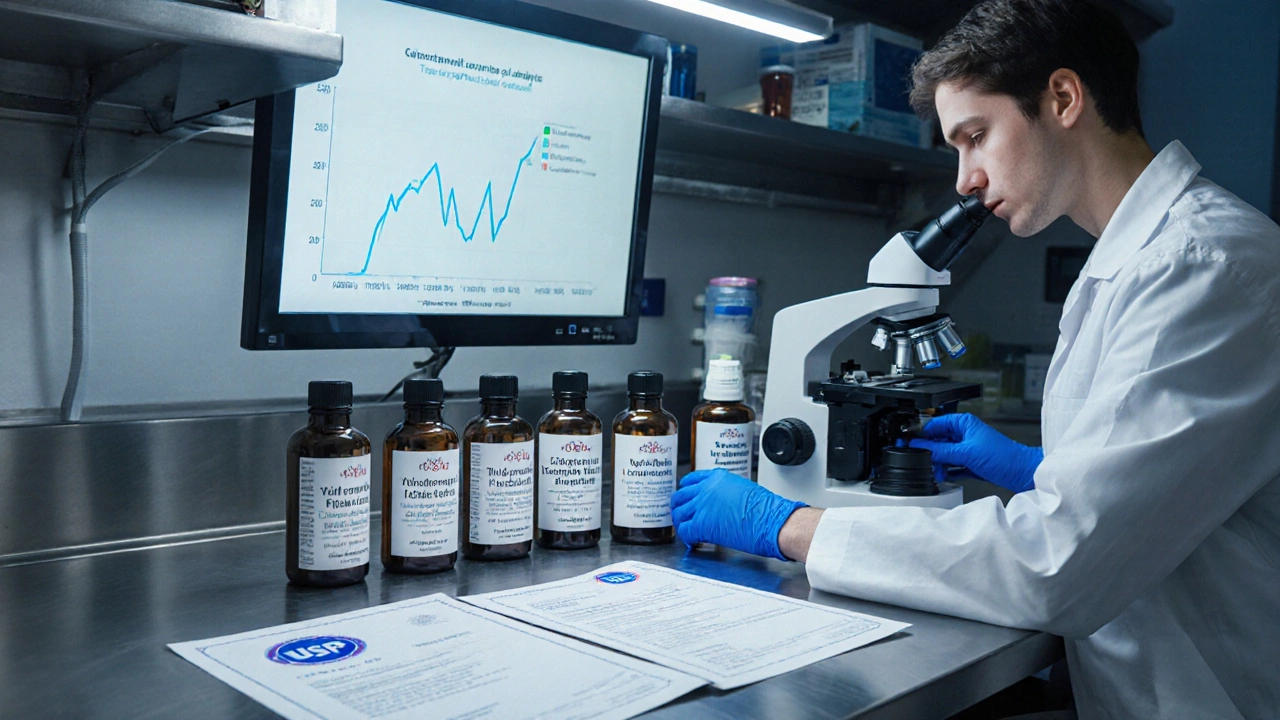When it comes to herbal supplements, the market feels like a jungle - bright bottles, bold claims, and a lot of guesswork. You want something that actually supports your health, not a fancy gimmick that ends up gathering dust on the shelf. Below is a straight‑forward guide that shows you exactly what to look for before clicking “add to cart”.
Why quality matters more than the price tag
Most people assume that a lower price means a better deal, but with Herbal Supplements are plant‑derived products intended to supplement the diet, often used to support specific health goals, cheap often translates to cutting corners: sub‑standard extracts, incorrect dosages, or even contaminants. A badly sourced product can trigger allergic reactions, interfere with prescription meds, or simply deliver none of the promised benefits. Investing a little more in a reputable brand can save you time, money, and health risks down the line.
Read the label like a detective
Ingredient lists are the first clue you have. Look for the scientific name of the herb - that’s how you avoid vague marketing terms. For example, instead of “ginseng,” you’ll see Echinacea purpurea a North American herb commonly used to support immune function. If the label only says “Echinacea extract,” dig deeper: is it standardized to a certain percentage of active compounds (like 4% cynaropicrin)?
Next, check the form - powder, capsule, liquid, or tincture. Each has different absorption rates. Capsules are convenient, but liquid extracts often deliver higher bioavailability because the herb is already in an extract form.
Beware of fillers and binders. Common additives like magnesium stearate, silica, or rice flour are generally safe, but if you have sensitivities, you’ll want a “no‑fillers” label.
Third‑party testing: your safety net
Unlike prescription drugs, supplements aren’t pre‑approved by the FDA U.S. Food and Drug Administration, the agency that regulates food and drug safety. The burden is on you to verify that the product contains what it says and nothing harmful. Look for certifications such as USP (United States Pharmacopeia), NSF International, or ConsumerLab. These organizations conduct independent testing for potency, purity, and contaminants like heavy metals, pesticides, or microbes.
Most reputable brands will display a batch number and a link to a PDF certificate of analysis (COA). If the COA is missing or you can’t find it after a quick search, that’s a red flag.
Dosage and form: match it to your goals
Every herb has an optimal dose range that’s been identified in research. For example, Turmeric a bright yellow root rich in curcumin, used for its anti‑inflammatory properties is most effective at 500-2000 mg of curcumin per day, often paired with black pepper extract (piperine) to boost absorption.
Check the product’s Dosage Guidelines recommended amount to take based on clinical studies or traditional use. If the label suggests “take as needed” without a clear milligram amount, you’re left guessing. Also, keep in mind that some herbs are best taken with food (e.g., Ashwagandha) while others might be more effective on an empty stomach (e.g., Ginkgo biloba).

Research the herb’s evidence
Not every herb has solid scientific backing. Here’s a quick snapshot of four popular choices:
- Echinacea a group of flowering plants used mainly to reduce the duration of colds - multiple meta‑analyses suggest modest benefit for cold symptom reduction, but results vary with species and preparation.
- Turmeric - strong anti‑inflammatory data, especially when combined with piperine; useful for joint health and occasional pain.
- Ashwagandha an adaptogenic herb that may help manage stress and improve sleep quality - several randomized trials show reductions in cortisol and improvements in sleep scores.
- Ginkgo biloba - studied for cognitive support; evidence is mixed, with higher doses (120‑240 mg) showing modest memory benefits in older adults.
When you see a claim like “clinically proven”, hunt for the original study. Reliable brands will cite journal references on their website or packaging.
Trust the source: brand reputation and expertise
Buy from companies that are transparent about sourcing. Ethical sourcing means the herb is harvested sustainably, often from regions where it grows natively, and processed under Good Manufacturing Practices (GMP). A brand that mentions partnerships with certified farms or employs an Herbalist a trained professional who specializes in the use of medicinal plants adds credibility.
Customer reviews can be helpful, but treat them as anecdotal. Look for consistent themes - repeated complaints about side effects or ineffective dosing are warning signs.
Quick side‑by‑side comparison
| Herb | Primary Benefit | Typical Daily Dose | Common Form | Known Interactions | Third‑Party Tested? |
|---|---|---|---|---|---|
| Echinacea | Immune support | 300‑900 mg (standardized) | Capsule, tincture | May affect immunosuppressants | Yes (NSF) |
| Turmeric (Curcumin) | Anti‑inflammatory | 500‑2000 mg curcumin + 5‑10 mg piperine | Softgel, powder | Can increase bleeding risk with anticoagulants | Yes (USP) |
| Ashwagandha | Stress & sleep | 300‑600 mg of root extract | Capsule, powder | May amplify thyroid medication | Yes (ConsumerLab) |

Checklist: Red flags to avoid
- No scientific name or standardization details
- Missing batch number or COA
- Excessive “miracle” language without data
- Unclear dosage (e.g., “take 1‑2 capsules daily” without mg)
- Sold only through “gift‑with‑purchase” schemes
- Absence of third‑party certification
Putting it all together - your buying workflow
- Identify the health goal (e.g., better sleep, joint comfort).
- Pick the herb with documented support for that goal.
- Read the label: scientific name, standardized extract, dosage, fillers.
- Check for third‑party testing and locate the COA.
- Compare a few reputable brands using the table above.
- Read recent user reviews for consistency.
- Make the purchase from a trusted retailer or the brand’s official site.
Follow these steps and you’ll feel confident that the supplement you’re buying actually does what it promises - without unwanted surprises.
Frequently Asked Questions
How can I tell if a herbal supplement is genuine?
Look for the botanical name, a standardized extract percentage, batch number, and an independent certificate of analysis. Brands that hide this info are often cutting corners.
Are herbal supplements safe to combine with prescription meds?
Not always. Some herbs, like Ginkgo biloba, can increase bleeding risk, while Echinacea may interfere with immunosuppressants. Always ask your doctor before starting a new supplement.
What’s the difference between a raw herb and an extract?
A raw herb is the whole plant material, often dried and powdered. An extract isolates the active compounds, usually providing a higher, more consistent dose. Extracts are typically labeled with a standardization figure (e.g., 5% withanolides for Ashwagandha).
Do I need to cycle herbal supplements?
Some adaptogens, like Ashwagandha, work best when taken for 8‑12 weeks followed by a short break. This helps prevent the body from building tolerance. Always follow the specific recommendations on the label or from a qualified practitioner.
Can I trust reviews on Amazon?
Amazon reviews can give a sense of user experience, but they’re often anecdotal and occasionally manipulated. Look for reviewers who mention dosage, duration, and any side effects - those details are more useful than generic “great product” comments.
Choosing the right herbal supplement doesn’t have to be a gamble. By checking the scientific name, confirming third‑party testing, matching dosage to proven research, and buying from a transparent source, you set yourself up for real results and peace of mind.





